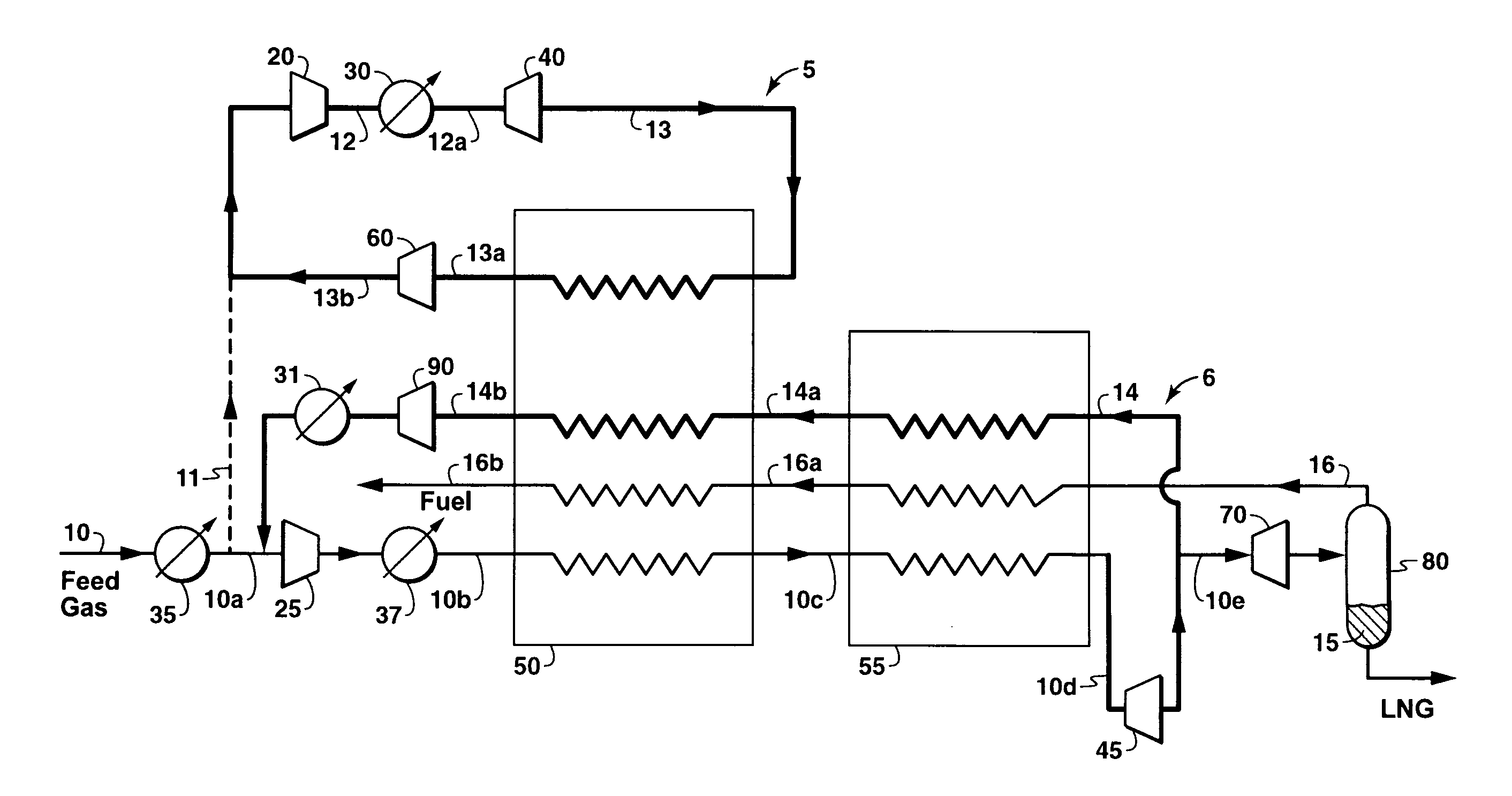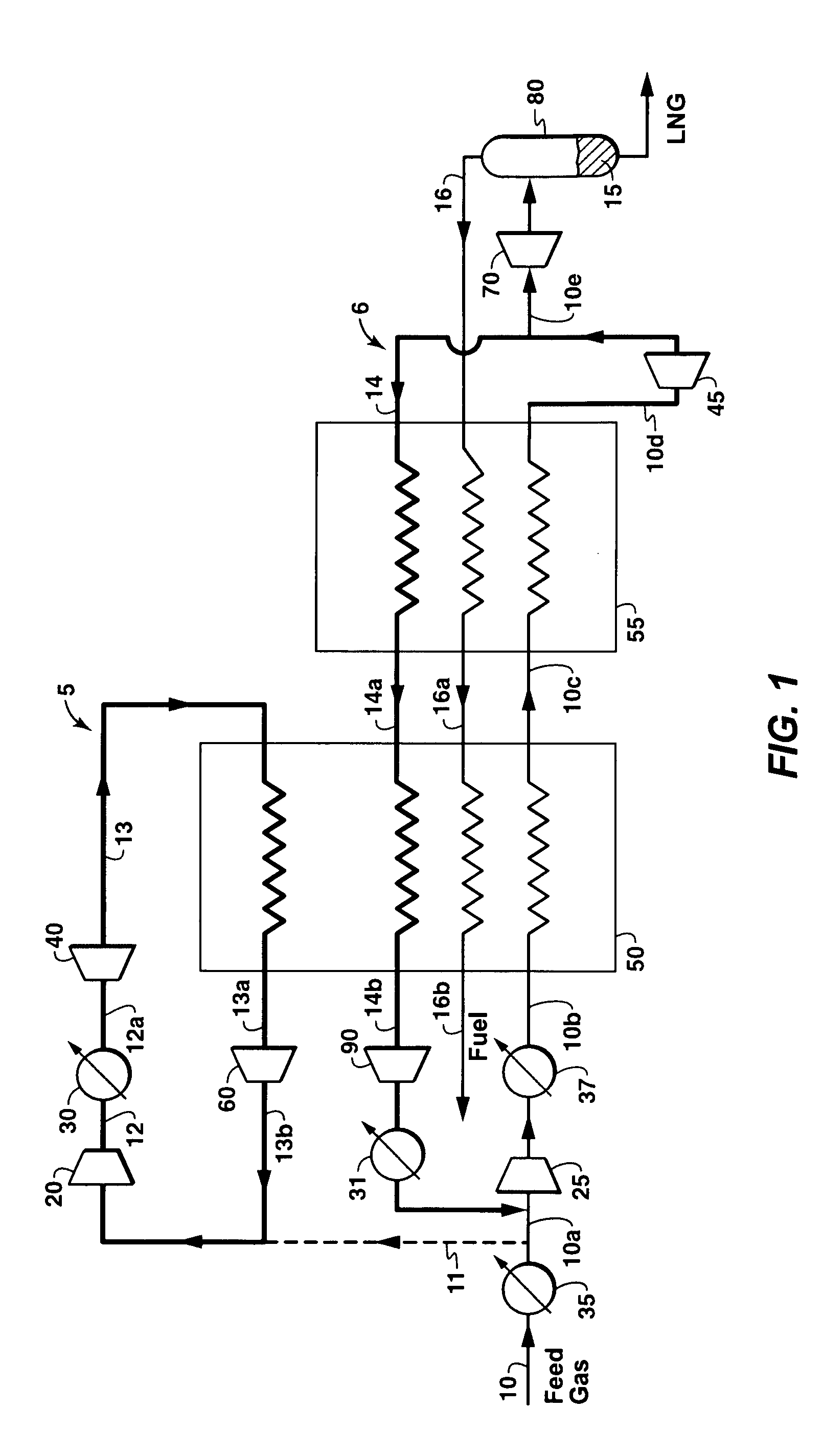Natural Gas Liquefaction Process
a natural gas and liquefaction technology, applied in the field of natural gas liquefaction, can solve the problems of high cooling load
- Summary
- Abstract
- Description
- Claims
- Application Information
AI Technical Summary
Benefits of technology
Problems solved by technology
Method used
Image
Examples
examples
[0030]The below presented tables and description depict performance curves and comparisons developed using an Aspen HYSYS® (version 2006) process simulator, a computer aided design program from Aspen Technology, Inc., of Cambridge Mass. The enthalpy values are calculated using the HYSYS process simulator. The enthalpy values are negative because of the enthalpy reference basis used by HYSYS. In HYSYS, this enthalpy reference basis is the heat of formation at 25° C. and 1 atm (ideal gas).
[0031]Table 1 illustrates the cooling load reduction for expander loop 5 and subcooling loop 6 when the cooling loads are compared from operating the feed gas at 1,000 psia (6895 kPa) versus 3,000 psia (20684 kPa), as discussed above.
[0032]Tables 2 and 3 below illustrate flow rate, pressures, and power consumption data using the invention process where the feed gas pressure at the entry to the primary heat exchange (e.g., 50) was varied from 1,000 psia (6895 kPa) to 5,000 psia (34474 kPa) while keepi...
PUM
 Login to View More
Login to View More Abstract
Description
Claims
Application Information
 Login to View More
Login to View More - R&D
- Intellectual Property
- Life Sciences
- Materials
- Tech Scout
- Unparalleled Data Quality
- Higher Quality Content
- 60% Fewer Hallucinations
Browse by: Latest US Patents, China's latest patents, Technical Efficacy Thesaurus, Application Domain, Technology Topic, Popular Technical Reports.
© 2025 PatSnap. All rights reserved.Legal|Privacy policy|Modern Slavery Act Transparency Statement|Sitemap|About US| Contact US: help@patsnap.com



